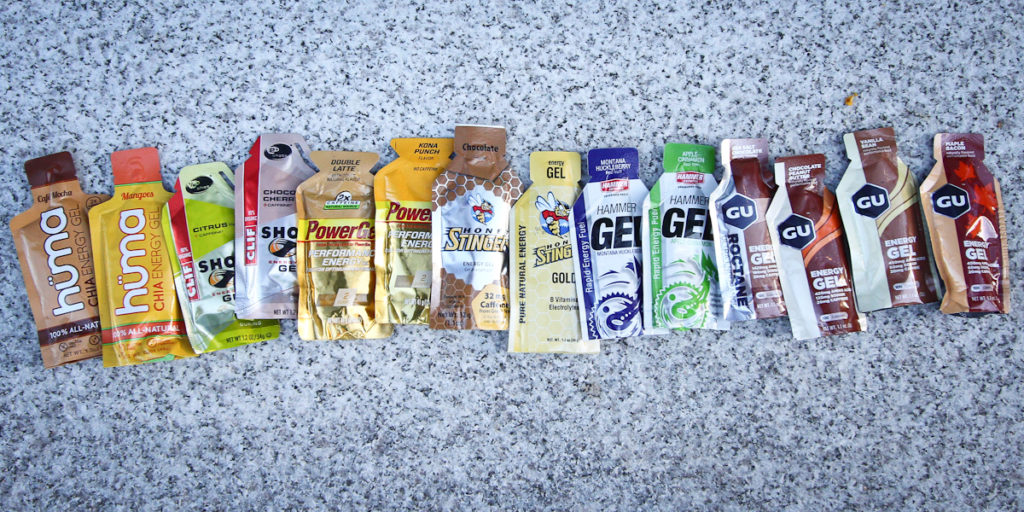Coaching to your first marathon probably additionally means coaching with power gels for the primary time. Whereas gels present a handy option to gas throughout lengthy runs and marathons, they may also be difficult for some runners to tolerate, resulting in gastrointestinal (GI) misery. With the fitting method and techniques, you should use gels successfully to spice up your efficiency whereas minimizing any discomfort. We spoke with runner and dietitian Megan Kuikman (who writes our “Gasoline Station” column within the print journal), who gave her recommendation on incorporating gels into your coaching routine for the primary time, with out the stomach bother.


Why are gels needed, you ask? The muscle mass solely have a restricted quantity of glycogen (saved carbohydrate)–about an hour’s price. If you happen to’ve ever “hit the wall” throughout a marathon, and even simply felt faint throughout a long term (attributable to lack of gas), you’re acquainted with the idea. (Whenever you’re working slowly, the physique attracts on fats shops for gas, however at quicker paces, it requires us to prime up our glycogen with fast gas like gels, chews or sports activities drinks.)
Begin early
Similar to you prepare your muscle mass for race day, you additionally want to coach your intestine. By beginning early, you give your self ample time to find out the perfect fuelling technique for you. “This will increase the physique’s skill to soak up carbohydrates and helps runners create a race-day diet plan, to allow them to go into their first marathon with confidence,” says Kuikman.


Frequency of coaching
As a novice gel consumer, it’s essential to introduce gels step by step. Kuikman says runners ought to purpose to incorporate them at the least as soon as every week, throughout their weekend long term. This common follow will assist you get used to to utilizing gels and to higher perceive your physique’s tolerance for various merchandise.
Timing and amount
Lengthy runs function a superb alternative to practise utilizing gels and to fine-tune your race-day diet plan. Deal with these runs as costume rehearsals, experimenting with totally different gel consumption timings and portions. Begin with taking one gel at a time, and after two or three weeks of success, you can strive growing your consumption; this may assist you decide the optimum quantity of gels your physique can tolerate with out inflicting GI misery. “As an illustration, a runner may begin working towards with a gel each 45 minutes,” says Kuikman. “If that is effectively tolerated, the following week the runner may practise with 1 gel each half-hour, and progress to find out the utmost quantity that may be tolerated.”
For runs lasting between one and two-and-a-half hours, novices ought to purpose to eat 30-60 grams of carbohydrate per hour. For longer runs, as much as 90 grams of carbohydrate per hour might be consumed. Most gels comprise solely round 20 grams of carbohydrate per gel, so alter your consumption accordingly.
Handle GI misery
If you happen to’ve skilled problem tolerating gels previously, Kuikman’s foremost recommendation is to practise. “Begin with small quantities, and step by step construct as much as decide your tolerance,” she says.
Kuikman additionally recommends runners begin fuelling as quickly because the race begins, since intestine points might be aggravated by dehydration, so that you’re extra more likely to expertise GI points in case you delay fuelling till you’ve already been working for an hour or extra. Carbohydrate merchandise with a glucose-to-fructose ratio of two:1 additionally are usually simpler on the digestive system. Most gels have been formulated on this manner, but it surely doesn’t harm to examine.
Begin fuelling earlier than the race
To optimize your fuelling technique, Kuikman encourages runners to not rely solely on gels. Begin with a carbohydrate-rich breakfast two or three hours earlier than your race, so that you’re beginning in a well-fuelled state, and practise your pre-race meal and fuelling methods throughout coaching to fine-tune your diet plan. “Don’t be scared to gas,” she says. “If a runner needs to run their quickest, then the extra gas the higher, to forestall the dreaded bonk.”

